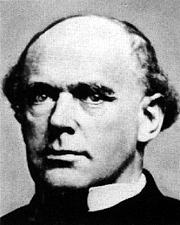JUNE 27, 1864:
The
Battle of Kennesaw Mountain:
Following
John Bell Hood’s miserable showing at Kolb’s Farm, William Tecumseh Sherman
U.S.A. is convinced that Joseph E. Johnston C.S.A.’s forces are on the ropes,
and that his lines are stretched thin.

Sherman decides to
move in with the Civil War tactical standard, a frontal assault against the
center of Johnston’s force. Wisely, he orders a pre-assault bombardment. 200
Union cannon open up at 6:30 A.M. and batter the Confederate lines around
Kennesaw Mountain for two hours. Not long after the Union guns begin to speak,
some 200 Confederate guns begin to answer, and the battlefield becomes a
howling nightmare. This should have alerted Sherman as to the mettle of the
Confederate forces in front of him, but, uncharacteristically, Sherman does not
see what he is seeing, or perhaps he judges the price reasonable for the prize.
Around 8:30, the Union troops begin moving against the center and the flanks
both, in an encircling movement which fails when they reach the Confederate
trenches. Lines of Confederates pop up and blaze away at the Union men at
pointblank range.

Other Rebels retreat
up the mountain, cannons and all, and begin firing down on the Union troops. After
ferocious hand-to-hand fighting in the trenches under a hail of cannonshot, the
Union troops dig in across from the Confederates. Both sides nickname this
place the "Dead Angle."
The fighting ends
around 10:45 A.M. Three thousand Union troops fall, compared with just 500
Confederates.
Although it was an
overwhelming Confederate tactical victory, the Battle of Kennesaw Mountain is a
strategic loss for Dixie. Sherman
remains in place for four days, still launching small, costly, but effective
attacks against Johnston. One of these
attacks is successful in moving Union troops within 5 miles of the
Chattahoochee River, closer to the last river protecting Atlanta than any unit
in Johnston's army. Johnston can be flanked, and the road to Atlanta
opened.














